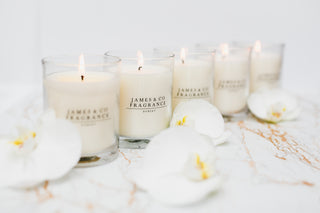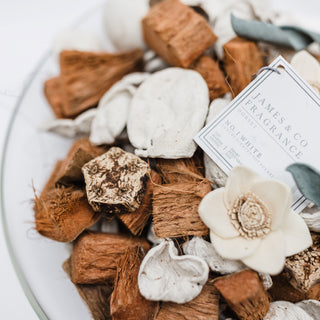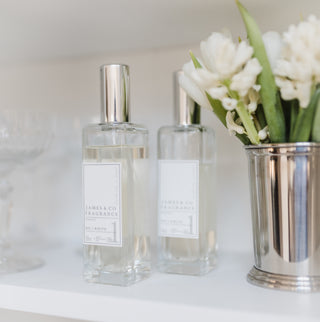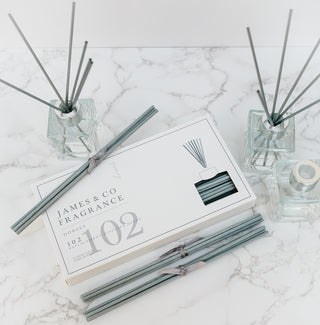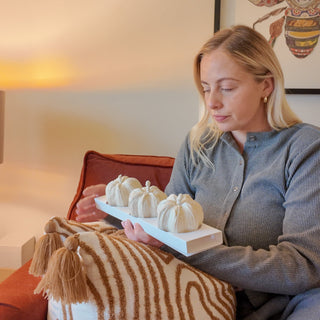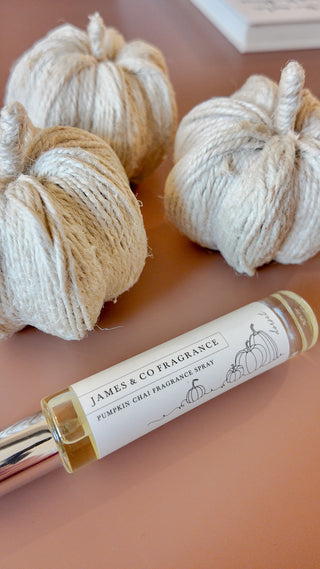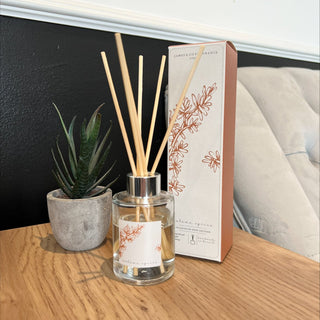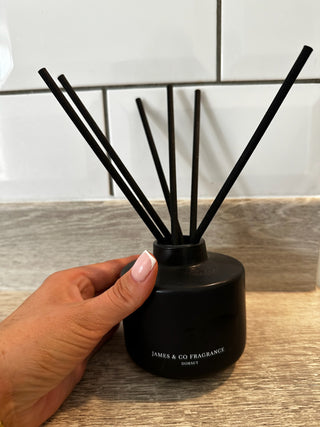When you walk into a beautifully designed room, it isn’t just the look that makes it feel special - it’s the entire experience. We love interior design at James & Co, especially freshening up rooms with small changes that have a big impact. There’s no better way to do that than creating a design that appeals to several senses at once - not relying on visual impact alone. Doing this helps a space feel more memorable and considered, especially for those with sensory impairments. Here are a few of our favourite ways to design a room with your senses in mind.
Texture: Create Layers of Comfort and Character
Texture gives a room depth and personality. Think of it as the difference between a sterile show home and a space that feels lived in. Combining a variety of textures helps create a beautifully tactile environment: velvet cushions against a linen sofa, a soft wool rug on a wooden floor, a smooth crockery set arranged on a rustic wood table.
Don’t forget about plants and greenery - their organic shapes and colours instantly soften a room and bring the outdoors in. Displaying flowers throughout your home is an inexpensive way to provide natural texture. You can also mix eras by pairing vintage fabrics, antique mirrors, or a mid-century chair with modern furniture to create a curated, eclectic feel.
Tip: Start with three different textures in each room, then build from there. A simple mix like a chunky throw, a natural jute rug, and a few leafy houseplants can transform a flat space into something much more imaginative and inviting.
Smell: Experiment to Find your Signature Scent
When it comes to styling and ambience, it’s no secret that scent is a firm favourite for James & Co! Fragrance is one of the quickest ways to shift the atmosphere in a room, not to mention the powerful way it can evoke and imprint memories in our minds. Fresh, zesty scents such as our No. 8 Lemon Candle can make a space feel energising - it’s an excellent choice for kitchens and can help combat unwanted cooking odours. If you like to style your home according to the seasons our Orchid and Pink Pepper Candle is the perfect nod to autumn, working well in communal areas such as lounges and dining rooms. It may take time to settle on your signature scent; remember that choosing a favourite fragrance is very personal.
Alternatively, you could try cleaning naturally with lemon juice to leave a bright, fresh scent behind, and drying your bedding and towels outdoors whenever possible - the fresh air really does do wonders! If you love a seasonal touch, simmer citrus peels and herbs on the hob for a DIY home fragrance option. Of all our senses, it’s often smell that leaves a lasting impression on visitors to your home.
Tip: To avoid overdoing things, choose one fragrance family per room and keep it consistent. For example, a citrus theme in the kitchen and something calming such as lavender in the bedroom.
Sight: Play with Light, Colour and Balance
Sight is the sense most people focus on when decorating, but it’s about more than paint. Think about how light moves through the space at different times of day, and how that might affect where you display your ornaments and pictures. Consider adding in layered lighting - overhead, task, and accent - to create warmth and interest. Experiment with complementary colours for a harmonious feel, and don’t be afraid of boldness: a feature wall with patterned wallpaper or a deep paint shade can anchor the room beautifully. Art is another great way to tell your story - whether you decide to invest in a statement piece or design a gallery wall of personal prints. When styling a room for visual appeal, interior designers often work in rows of threes - three cushions, three vases, three candles - this achieves balance that feels effortless.
Tip: Walk into the room and ask yourself where your eyes are naturally drawn to first. If there’s no clear focal point, create one with colour, artwork, or an arrangement of objects.
Sound: Set the Mood
Sound can completely change how a room feels, yet it’s often the most overlooked design element. Think about the acoustics: rugs, curtains, and upholstered furniture absorb echoes and make spaces feel calmer. They can also be helpful to soften less pleasant noises such as traffic sounds or noisy neighbours. To create atmosphere, consider gentle background music or nature sounds to set the mood. An open fire brings a lovely, natural sound - the crackle of burning logs invites an instant sense of cosiness and comfort.
Tip: Create a playlist that matches the room’s purpose - lively tracks for entertaining spaces, calming music for bedrooms and reading nooks.
Bringing it All Together
Keeping texture, smell, sight and sound all in mind as we design our spaces, adds so much more dimension and interest - both for us and our guests. It’s a wonderful way to spark creativity, helping us to brainstorm ideas and design a look that’s far more personalised.
Have you considered styling with the senses in your home? - we’d love to hear if our ideas have worked for you!




